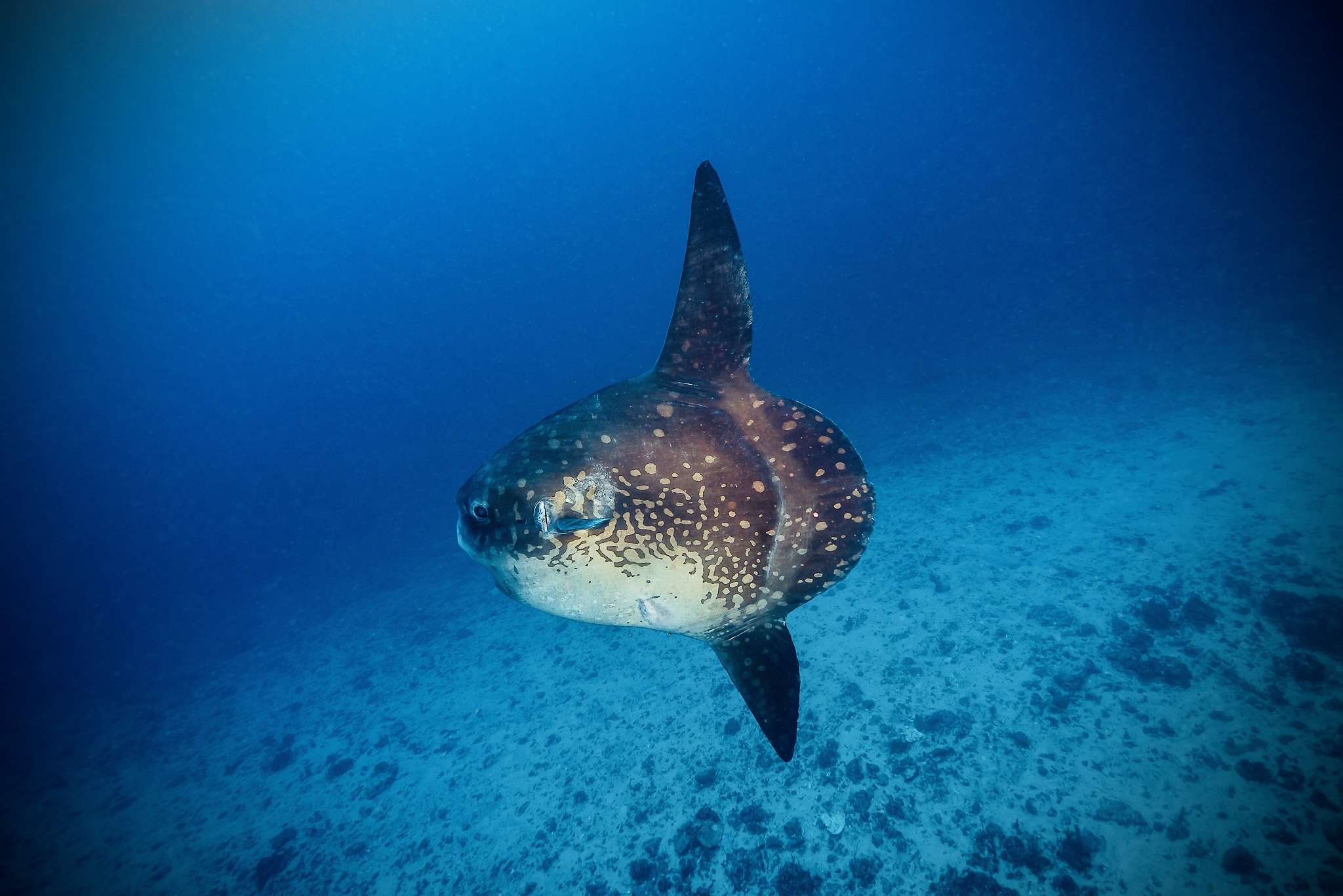In search of the quirky fish of the deep… Dive to 40m with mola mola in Nusa Penida and PADI’s Deep Diver Specialty
Molas are the creature that everyone hopes to see while diving Nusa Penida and Nusa Lembongan. We are regularly asked how divers can increase the chance of encountering these incredible creatures, if it’s possible as an Open Water diver, and where is best to search.
Whilst molas have been sighted in shallow water, and have even been seen to breach the surface, the best chances are in deep (usually cold) water, especially if you hope to see multiples! As such, the best advice we can give is to dive over several days and take PADI’s Deep Diver course. Read on for more tips.
Mola Mola Behavioural Patterns
Mola mola are understood to be native to all temperate (above 12°C / 54°F) and tropical ocean areas across the globe, including Indonesia. However, they tend to favour water temperatures below 26°C / 79°F and are therefore rarely seen in the shallows of tropical reefs, surrounding the equator.
So what makes Nusa Lembongan and Nusa Penida special? We get cold currents…! During the months of July to October, currents from the south move through the region bringing cold water up from the deep. As these cool waters push upwards, in the form of thermoclines, the molas journey upwards with them, to depths where it is possible for recreational divers to see them. So for a few months every year, Nusa Lembongan is the ideal destination for divers hoping to check this quirky fish off their bucket list.
As mola mola don’t seem to enjoy warm temperatures for long periods, November to June is typically too hot for them to venture up into the shallows. It is understood that the molas do stay around the three islands all year, so it is possible to see them within this period, but it is rare as they usually stay at depths that are too deep for recreational divers.
Molas can have over 40 different types of parasite living on their skin and internally, so cleaning is a top priority for their health. In the Nusa Lembongan area, local reef fishes help with this, removing the parasites from the molas’ skin and mouth, in a symbiotic relationship; the mola is being cleaned and the reef fish are able to feed, hence why we so often see bannerfish alongside them.
Best Dive Sites for Seeing Molas
Cleaning stations provide a great opportunity to spot mola molas, these are underwater areas where marine animals repeatedly visit to be cleaned by smaller aquatic life.
The most famous cleaning station for mola mola in Nusa Penida is at Crystal Bay but there are also mola cleaning stations at each of the dive sites on the north coast of Nusa Penida, as well as at Ceningan Wall and Gamat Bay, in the deep channel between Nusa Ceningan and Nusa Penida.
Last season, our Lembongan dive team regularly saw groups of 3-4 molas along the north coast of Nusa Penida and in the Ceningan-Penida channel, and sometimes 5 or 6 at Crystal Bay! Knowing the dive sites, ocean conditions and patterns of mola behaviour is critical for your search.
The primary fishes responsible for cleaning molas, are the moorish idol and bannerfish. If while looking out into the blue, away from the reef, if you spot a group of moorish idols and bannerfish together, staying in the same area, this is likely to be a cleaning station so we advise you to keep looking out, into the blue water, in the hope that a mola will venture up from the deep to visit this cleaning station. Fingers crossed!
The PADI Deep Diver Course
If you’re already a diver, the chances are that you enjoy exploring, finding new adventures and searching for elusive aquatic animals, correct?! But at some point, many divers crave a new buzz. There’s something inexplicably exciting about descending to deeper dive sites; the mystery and anticipation that you may encounter new marine life or see pelagic species cruising past, it can really get your adrenaline running! If this sounds like your type of diving, the PADI Deep Diver Specialty may be for you, read on for more details.
Course prerequisites:
- Minimum level of PADI Advanced Open Water Diver (or equivalent)
- 15+ years
- Medically fit
The two-day course starts with discussing the reasons we deep dive and how important it is to know your personal limits. During four deep dives with your instructor, you’ll cover:
- Specialized deep diving equipment
- Deep dive planning, buddy contact procedures and buoyancy control
- Managing your gas supply
- Identifying and dealing with narcosis and safety considerations
There is no exam, so you can spend most of your time in the water, looking for molas!
How PADI’s Deep Diver Course Helps in the Search for Molas
As these pre-historic-looking creatures normally hang-out out depth, the deeper you are able to go, the higher the chance of seeing them. Most sightings of the molas are around the 25m to 40m (82ft to 130ft) mark, and unfortunately past the PADI Open Water and Advanced Diver depth limits. The PADI Deep Diver certification gives you an extra 10m (33ft), to boost potential sightings.
There are four dives in the PADI Deep Diver course; day one to a max. depth of 30m (98ft), day two to a max. depth of 40m (130ft).
Want to push your diving to the next level? Hoping to see mola mola in Nusa Penida?

